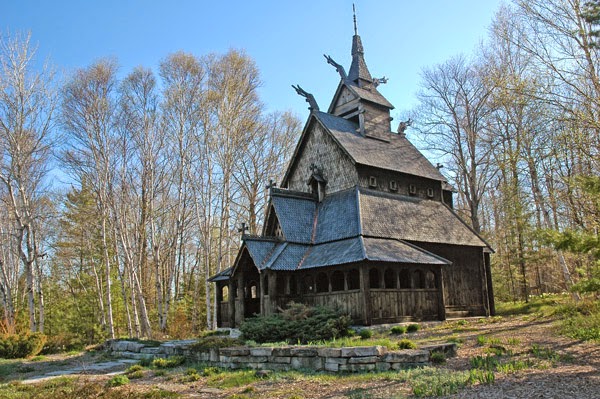Come for the music: stay for the atmosphere.
This might serve as a fitting slogan for the Twin Cities
jazz festival, held every June in and around Mears Park in Lowertown Saint
Paul.
The shows are free. The streets are blocked off. There are
four outdoor stages and quite a few events scheduled in nearby bars and
restaurants. Come early. Patronize the food trucks. It’s a good way to get to
know the neighborhood.
As for the music, it’s a mixed bag of local, international,
and marquee jazz performers. Too many guitars, too few keyboards and brass instruments.
But that’s the way jazz has gone, and we can’t do much about it.
We arrived at 5 p.m. with collapsible camp chairs and
considered ourselves lucky to stake out two spots on the east side of the plaza
in front of the main stage. We caught the last two numbers of Red Planet, one
of guitarist Deal McGraw’s groups. The
first was a slow and slightly tedious blues number, but the group finished up
with a rousing version on John Coltrane’s "India." Without much of a melody to
work with, McGraw slashed through some very thoughtful and occasionally exhilarating
changes.
By that point the plaza was filling but the woods and grassy
knolls on the south side of the park still looked pleasantly pastoral, with picnickers
here and there and children cooling their feet in the artificial stream that
crosses it.
Leaving our chairs behind, we paused briefly at the small Sixth Street
Stage, where Peruvian guitarist Andres Prado was fronting a band with an
unlikely name: Mississippi. Then we scoped out the food trucks on the east side
of the park, returning to our seats with a hot dog and some chicken curry from a
self-styled Afro-Italiano truck called the Cave Café.
Now a momentous strategic issue arises: move onto the grass on
the other side of the plaza path, out of the direct sunlight? Yes. The sightline
isn’t quite so good and the sound might suffer a little, but it’s a far more
pleasant place to sit!
A new band appears. Dave Hegedorn (vibes) and Jon Weber (piano)
backed by an astute rhythm section (Steve Pikal and Phil Hey) weave their way
through some tasty standards. One of the best sets of the weekend.
Friends arrive and fill in the space next to us. We wander
down to the Union Depot, where the Twin Cities Latin Jazz Orchestra is playing.
The wind is gusting, dusk approaches, crowds are getting thicker, and there are
times when the music sounds better from a distance, wafting between buildings
and trees.
By the time the
Bradford Marsalis quartet took the stage, crowds were thick in the aisles and
the MC had to tell the people standing four deep in front of the stage to move
to the back so others could see. Marsalis immediately established a “command” on
stage, and on the first number his pianist, Joey Calderazzo, played a solo so
long and frantic I began to worry for the continued health of his forearms.
Marsalis himself shifted from soprano to tenor saxophone as
the group canvassed a Bebop tune (was it Gillespie’s 52st Street Theme?), an original composition ( modal and intense),
then a standard. Marsalis returned to the soprano for a ballad; it was dark, the
conversational buzz in the park had jumped a few notches, the trees above our
heads were rustling big time, and the young people sitting behind us (who appeared
to have little knowledge of or interest in jazz, to judge from snippets of
conversation that came our way) had gotten into party mode around the beer
cooler.
Meanwhile, a couple sitting directly in front of us (inspired
by the familiar rhythms of the standard, no doubt), had leapt from their chairs
and begun to dance in the now-confined space they occupied. The man wore a pork pie hat, hadn’t shaved recently, and seemed to have picked up his
dance steps from watching Jerry Lewis movies. His partner did her best to remain upright.
It was about time to go.
We beat the throngs out to the sidewalk and stood in the
streetlight glare enjoying the encore—a soulful rendition of “St. James Infirmary.” Once
again, the music seemed to come together into a coherent sound more forcefully
from a distance.
Bradford’s set had been rousing, but also frustrating: so much
good music had been lost to the environmental static.
* * *
Almost coincidentally, we dropped by the festival again on Saturday
afternoon, on our way home from a bike ride in Washington County. The scene was
pleasantly relaxed on the grass in front of Union Depot, where we heard two
vocalists (Lucia Newell and Maud Hixson) shape tunes, backed by an attentive
rhythm section that included pianist Rick Carlson and (once again) guitarist Dean
McGraw.
On our way back to the parking lot, we passed the Jazz
Education stage on Prince Street, in front of the Black Dog Café. A hip quintet
of youngsters was just wrapping up a set, after which some educators summoned a group
of twenty-odd teens in brown T-shirts who had been lying around on the sidewalk (the Jazz Around Minneapolis Big Band) to
gather with their instruments on the east side of the stage.
They were on next!





































